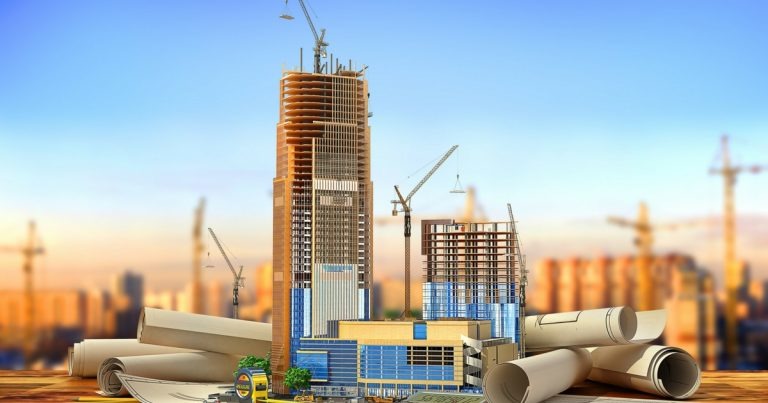Building Safety and Efficiency How Insulation Shapes Modern Construction

When it comes to building safety and efficiency, insulation plays a pivotal role that often goes unnoticed. Imagine a home or office space not just comfortable in temperature but also shielded from unwanted noise and fire hazards. Acusfoc in Spain, where climate diversity varies from the scorching heat of the south to the chill of northern regions, effective insulation is crucial for both energy conservation and occupant safety.
Insulation isn’t merely about keeping warmth in during winter or cool air circulating in summer; it’s an essential component that enhances fire safety and soundproofing capabilities within buildings. As we delve into this important topic, we’ll discover how investing in high-quality materials can make all the difference—not just for your comfort but also for peace of mind. Let’s explore why understanding insulation is vital for every construction project today.
Importance of Insulation in Construction
Insulation is a cornerstone of modern construction, influencing both comfort and energy efficiency. Properly installed insulation keeps indoor temperatures stable, reducing the need for excessive heating or cooling.
This not only lowers utility bills but also minimizes your carbon footprint. In a country like Spain, where energy costs can fluctuate significantly, effective insulation pays off in more ways than one.
Understanding Fire Safety and Insulation
Fire safety is a critical aspect of construction that often goes overlooked. Insulation plays a vital role in preventing the spread of flames and smoke throughout a building.
When integrated properly, insulation can provide essential barriers against fire hazards. It slows down heat transfer, which can significantly delay combustion and give occupants more time to evacuate.
Different types of insulation come with varying fire ratings, making it crucial for builders to select materials that meet local safety standards. Materials such as mineral wool or fiberglass offer superior fire resistance compared to traditional foam insulations.
Understanding the interaction between insulation and fire dynamics helps architects design safer structures. Implementing effective insulation strategies not only enhances comfort but also reinforces overall building integrity during emergencies.
Types of Insulation Materials and Their Fire Ratings
When choosing insulation materials, understanding their fire ratings is crucial for safety. Different types of insulation offer varying levels of fire resistance, which can significantly impact building safety.
Mineral wool, commonly known as rock wool or stone wool, has excellent fire-resistant properties. It can withstand high temperatures and does not ignite easily. This makes it an ideal choice for areas requiring enhanced fire protection.
Foam board insulation is lightweight and offers good thermal performance but varies in flammability based on its type. Polyurethane foam provides a higher R-value but must be treated with flame retardants to improve its safety profile.
Cellulose insulation, made from recycled paper products, also holds decent fire resistance when properly treated with borate additives. Understanding these materials helps ensure you select the right option for your project while adhering to local regulations regarding fire safety standards in Spain.
Regulations and Standards for Fireproof Insulation in Spain
In Spain, fire safety regulations for insulation materials are governed by the Código Técnico de la Edificación (CTE). This code sets out strict standards to enhance building safety and minimize risks during a fire.
Key among these is the requirement for insulation materials to have appropriate reaction-to-fire classifications. These ratings determine how well materials resist ignition and limit flame spread, which is crucial in protecting lives and property.
The European standard EN 13501-1 also plays a vital role. It categorizes construction products based on their performance under fire conditions, offering clear guidance for builders and architects.
Additionally, local authorities often implement specific requirements tailored to regional needs. Understanding these guidelines ensures compliance while promoting safer construction practices across various projects in Spain.
For those involved in building design or renovation, staying informed about these standards can significantly impact project outcomes and overall safety.
Benefits of Soundproofing in Buildings
Soundproofing offers a multitude of benefits in buildings. First and foremost, it enhances comfort by reducing noise pollution. This is particularly important in urban areas where external sounds can disrupt daily life.
In residential settings, soundproofing creates a peaceful environment for relaxation and sleep. It’s an essential feature for homes with multiple occupants or shared walls.
For commercial spaces, such as offices or conference rooms, effective soundproofing can boost productivity. Employees benefit from fewer distractions and improved focus on their tasks.
Effective Soundproofing Techniques for Different Spaces
Soundproofing varies depending on the space’s purpose and layout. In residential areas, thick curtains can absorb noise from outside while adding an aesthetic touch. Acoustic panels are excellent for living rooms or home theaters, reducing echoes and enhancing sound quality.
For offices, consider installing sound-absorbing partitions to create quieter zones. Carpeting can further dampen sounds, making workspaces more conducive to focus and productivity.
Kitchens benefit from insulation in walls and ceilings to minimize noise during food preparation or social gatherings. Additionally, sealing gaps around windows and doors helps prevent external disturbances.
In industrial settings, heavy-duty materials like mass-loaded vinyl provide robust sound barriers against machinery noise. Implementing these techniques will not only improve comfort but also promote a healthier environment for occupants across various spaces.
Choosing the Right Insulation for Maximum Safety and Efficiency
Choosing the right insulation is crucial for ensuring safety and efficiency in any building project. Different materials offer varying levels of fire resistance, thermal performance, and soundproofing capabilities.
Consider the specific needs of your space. For areas prone to high heat or potential fire hazards, look for insulation with a high fire rating like mineral wool or fiberglass. These options not only resist flames but also provide excellent thermal regulation.
For noise-sensitive environments such as offices or residential units, acoustic insulation can significantly enhance comfort. Products designed specifically for soundproofing help create serene spaces by minimizing unwanted noise transfer.
Assess factors like budget, climate conditions, and building regulations before making a decision. The right choice supports energy efficiency while safeguarding occupants from fire risks and excessive noise disturbances.
Conclusion
Investing in high-quality insulation is crucial for any construction project aiming for safety and efficiency. The right insulation not only enhances fire safety but also provides soundproofing benefits that improve the overall comfort of a building. Understanding the various types of insulation materials available, along with their respective fire ratings and compliance with local regulations, empowers builders to make informed choices.


